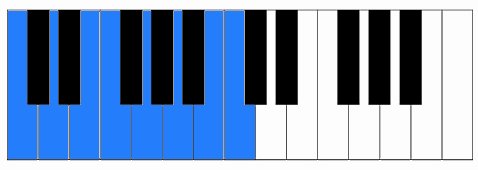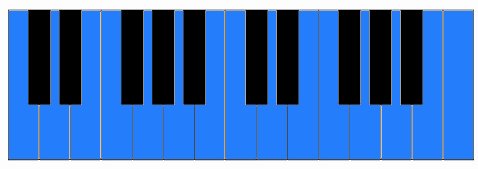An Octave Scale is simply a scale that is played to one octave.
What Is An Octave
An octave is the same note just played higher or lower.
If you look at the piano you will notice that there are multiple C’s. If you play one of these C notes and then play the next C up you have played a C octave.
This goes for going down also. If you play an the next C down that is an octave.
More Octaves
You can play even more then just one octave. If you play a C then go up or down two C’s then you are playing 2 octaves. This can go on all the way up and down the piano.
One Octave
Remember this scale is playing a scale up to the next octave. So if you start on a C and play the major scale up to the next C note then you have played an octave scale.
The notes for this scale would be:
C, D, E, F, G, A, B, C

You have played all the notes in the C major scale and then ended on a C which makes this an octave.
Two and Three Octaves
You can play more than just one octave. If you really want to help your fingers move when playing the piano you need to practice two and three octaves.
To play two major scales you start on the C then play up the second C that you find
These note would be:
C, D, E, F, G, A, B, C, D, E, F, G, A, B, C

Fingering
The fingering for these scales change however. If you are playing one scale then you simply use the normal fingering: Right – 1, 2, 3, 1, 2, 3, 4, 5
Left – 5, 4, 3, 2, 1, 3, 2, 1
If you are playing more than once octave then you need to change the fingering. For more than one octave your fingering will look like this.
Right – 1, 2, 3, 1, 2, 3, 4, 1, 2, 3, 1, 2, 3, 4, 5
Left – 5, 4, 3, 2, 1, 3, 2, 1, 4, 3, 2, 1, 3, 2, 1
Conclusion
Use these scales in your practicing. I like to practice the one and two octave scale everyday to help keep my fingers worked out.
It will help you with your fingering and also help you to play longer and faster pieces.
Make sure you add these scales into your practice routine.
